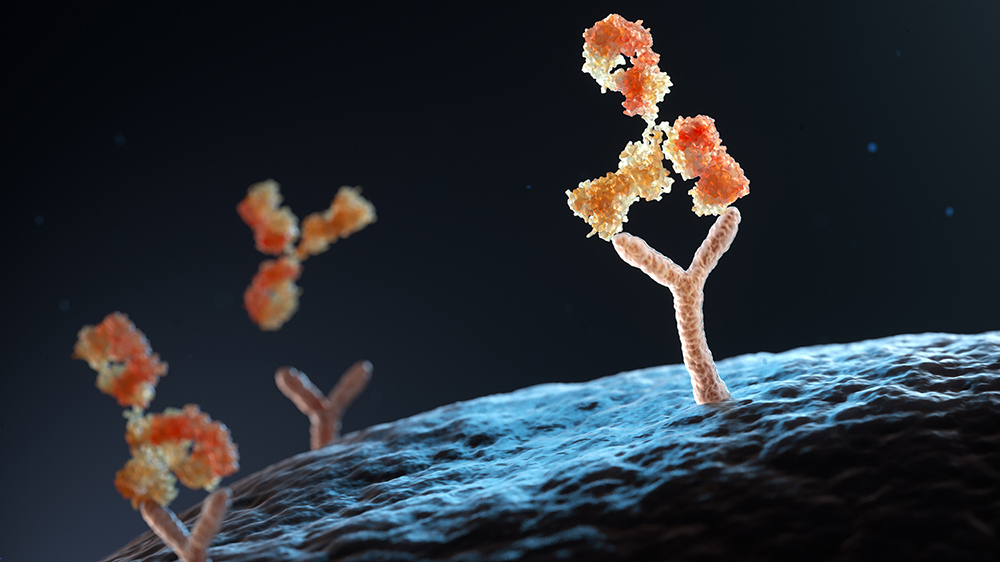Navigation auf uzh.ch
Navigation auf uzh.ch

Virus infections trigger the cells of the immune system to release type 1 interferons. These proteins act as early messengers that warn uninfected cells and tissues that a virus is spreading. This allows cells to prepare themselves so that they are ready to fight the virus when it reaches them.
In individuals with a compromised type 1 interferon system, severe viral infections can occur because the body cannot mount a full defense. Recent research has shown that about 5 to 15 percent of people who are in hospital with severe COVID-19 or influenza have a deficiency in their type 1 interferon response. This is because their blood contains autoantibodies – antibodies that target a person's own structures – that bind type 1 interferons and stop the messenger from functioning.
“With our study, we wanted to find out what causes the immune systems of some people to turn against themselves and to also understand the consequences of having autoantibodies against type 1 interferons,” says study head Benjamin Hale, professor at the Institute of Medical Virology of the University of Zurich (UZH).
His research team utilized a very large collection of frozen blood samples from the Swiss HIV Cohort Study, originally donated for research on HIV infection. They analyzed the samples of around 2,000 adults who had donated blood samples twice a year for several decades. “This study was only possible because of this unique biobank of stored longitudinal blood samples and well-curated clinical data,” says Hale. The fact that the donors were people living with HIV had no relevance for the results, because in this cohort the virus was suppressed by treatment.
First, the UZH team analyzed the blood samples for the presence of autoantibodies against type 1 interferons to find out who had developed the autoantibodies, when this occurred, and how long these autoantibodies lasted in the blood.
The analysis revealed that around two percent of individuals produced autoantibodies against type 1 interferons in their lifetime and that this typically occurred between the ages of 60 to 65. This confirms prior studies that reported that the prevalence of autoantibodies against type 1 interferons might increase with age.
Next, by studying clinical data, researchers at the Department of Infectious Diseases and Hospital Epidemiology of the University Hospital Zurich (USZ) were also able to understand which factors contributed to the development of autoantibodies against type 1 interferons. The individuals who developed them appeared to be prone to also producing antibodies against other proteins formed by their own bodies. This so-called loss of self-tolerance can occur in some people as they age. “These individuals may produce antibodies against their own type 1 interferons because they are both prone to making autoantibodies and are exposed to high levels of type 1 interferons, for example because their immune system produces interferons against other infections at the time,” supposes Hale.
Importantly, the study found that once developed, these autoantibodies remained detectable in the blood of individuals for the rest of their lives. People with autoantibodies against type 1 interferons, even when they had developed them as far back as in 2008, were more likely to suffer from severe COVID-19 in 2020. “These autoantibodies have consequences for individuals decades later, leading to a compromised type 1 interferon system and reduced immunity against viruses,” says Hale.
Understanding these risk factors might lead to future diagnostic tests that can identify older individuals who are more prone to developing this deficiency, and therefore help with measures to prevent autoantibodies ever developing. Identifying individuals with autoantibodies against type 1 interferons could also help to prioritize these people for vaccines or antivirals to prevent severe viral infections.
Fernbach et al. Loss of Tolerance Precedes Triggering and Lifelong Persistence of Pathogenic Type I Interferon Autoantibodies. Journal of Experimental Medicine. 17 July 2024. DOI: https://doi.org/10.1084/jem.20240365